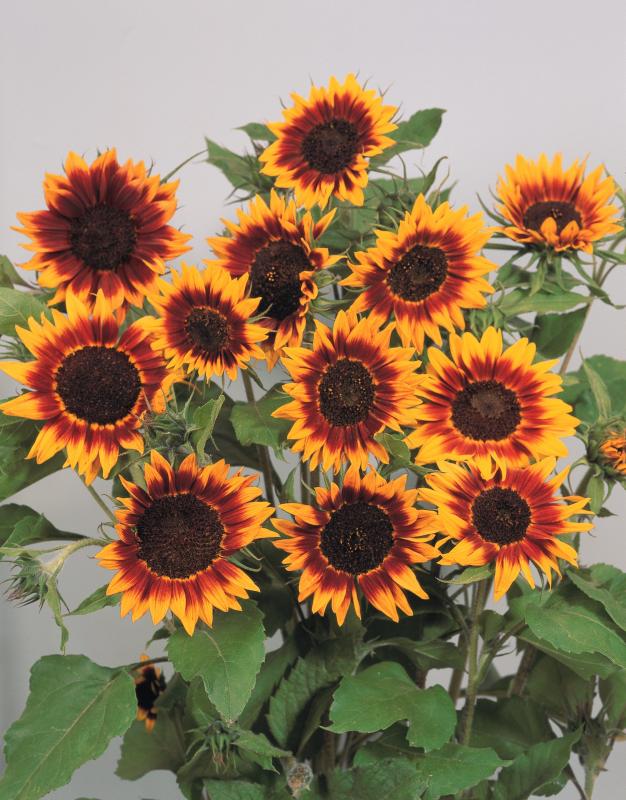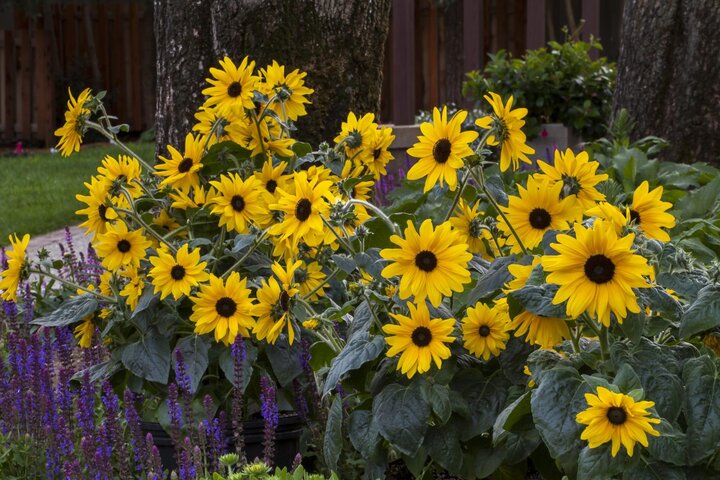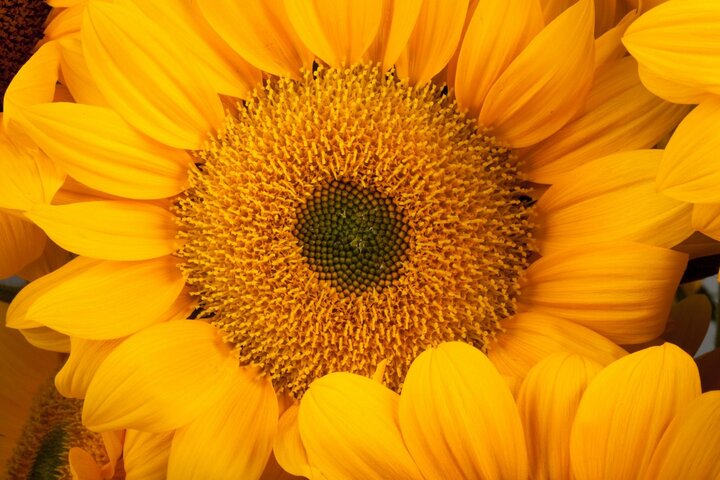
'Ring of Fire' sunflower, by Garden Trends. Images from the National Garden Bureau.
This year the National Garden Bureau features the sunflower as its annual flower of the year. Sunflowers originated in the Americas and domestic seeds dating back to 2100 BC have been found in Mexico. Native Americans grew sunflowers as a crop, and explorers eventually brought the flowers to Europe in the 1500s. Over the next few centuries, sunflowers became increasingly popular on the European and Asian continent, with Russian farmers growing over 2 million acres in the early 19th century (most of which was used to manufacture sunflower oil).
Dutch painter Vincent Van Gogh famously painted a world-renowned still-life series of sunflowers. His sunflower paintings are so famous, the Van Gogh museum has teamed up with the breeder of Sunrich sunflowers to create the 'Sunrich-Van Gogh’s Favorite' label of sunflowers.
Sunflowers can be annuals, Helianthus annuus, or perennial, Helianthus maximiliani, but most modern sunflowers are annuals.

Single Stem vs. Branching Sunflowers
Single stem sunflower varieties are best for high-density plantings and produce consistently beautiful flowers on tall stems. Succession planting will be needed for continuous blooms throughout the season.
Branching varieties produce flowers on multiple shorter stem throughout the season, which makes them ideal for sunflowers all season long.
Single stem: ProCut® Series, Sunrich™ Series, and Vincent® Series
Branching: Autumn Beauty Mix, Soraya (AAS Winner), SunBuzz, Suncredible®, Sunfinity™
Pollen vs Pollen-free Sunflowers
Sunflowers that produce pollen are a great option for gardeners focused on supporting pollinators or for those looking for a lower price point.
Many modern sunflower varieties are bred to be male sterile, or pollen-free, to help foster extended vase life and a nice, clean appearance. These also keep your table clean from pollen!
Luckily, there are many varieties of both pollen and pollen-free.
Pollen-free: Moulin Rouge, ProCut Series, Sunbuzz, Sunrich Series, and Vincent Series
Pollen: Soraya (AAS Winner), Ring of Fire (AAS Winner), and Valentine

How to Grow and Care for Sunflowers
Sunflower seeds can be direct sown after the risk of frost has passed or started indoors. Seeds should be sown ¼” to ½” deep and kept moist. Taller, larger sunflower varieties have a large taproot to keep them rooted and do not do well when they are transplanted so direct sowing of those varieties is recommended. Choose a site, or a container, in full sun, with average fertility and good drainage.
Extend Their Vase Life
If you’re growing sunflowers for cuts, here are some recommendations to extend the vase life of your flower.
- Cut when the petals or ray flowers just begin to open, before they have opened off the disc completely. It is recommended to cut in the early morning before the heat of the day.
- Remove the leaves below the water line and place in freshwater or properly measured fresh flower food solution
- Check water regularly sunflowers are heavy drinkers and can empty a bucket or vase overnight
- Change water daily; sunflowers have what some call a dirty stem, as the water quickly turns cloudy with potential for bacterial issues
For more information on this year's featured plants, visit the National Garden Bureau. The National Garden Bureau recognizes and thanks Garden Trends/Harris Seeds as author and contributor to this fact sheet.
Images from the National Garden Bureau. Feature image - 'Ring of Fire' sunflower by Garden Trends.
- Sunfinity sunflower, by Syngenta
- Vincents Fresh sunflower, by Sakata Seed
- Vincent Fresh sunflower, by Garden Trends
Search Our Archive
Associated Video
Odd Edibles
Nebraska Extension Landscape Horticulture Specialist Kim Todd talks about eating different parts of vegetables and flowers.